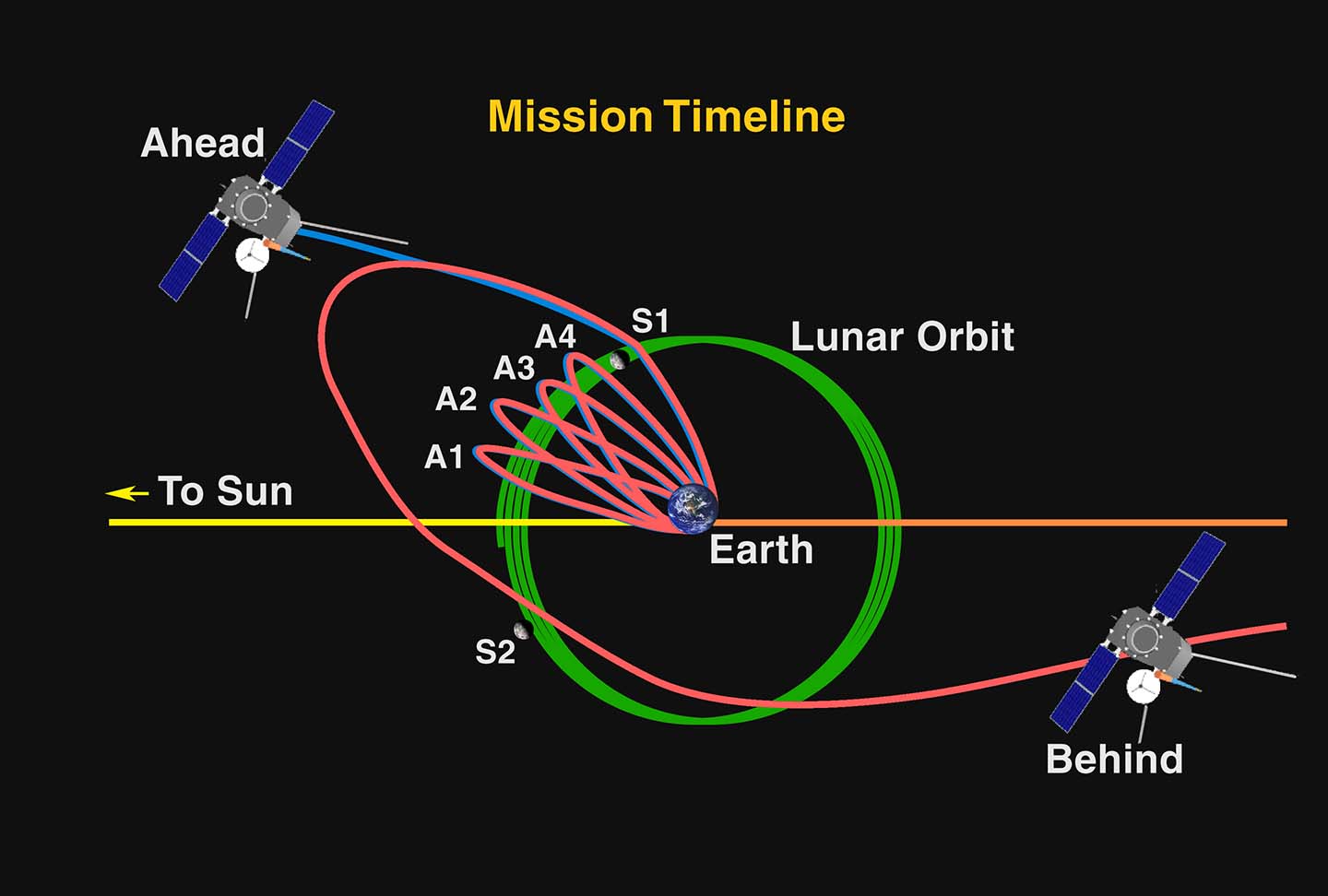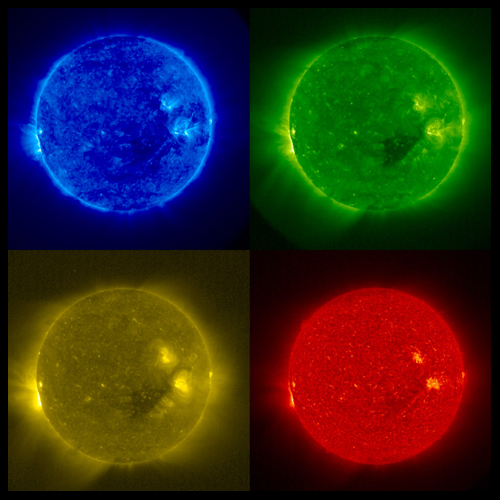Press Release
Twin APL-Built Spacecraft Swing Past Moon, Preparing for 3-D Solar Studies
Tue, 01/23/2007 - 13:08
NASA's twin STEREO (Solar TErrestrial RElations Observatory) spacecraft, built and operated by The Johns Hopkins University Applied Physics Laboratory (APL), in Laurel, Md., completed a series of complex maneuvers Sunday to position the spacecraft in their mission orbits. The spacecraft will be in position to produce the first 3-D images of the sun by April.
Spacecraft trajectories and lunar swingby maneuvers were created by mission design engineers at APL. "STEREO is the first mission to use the moon's gravity to redirect multiple spacecraft, launched aboard a single rocket, to their respective orbits," says Ron Denissen, APL STEREO project manager.
During the initial weeks following launch, mission operations personnel at APL guided both spacecraft through a series of four highly elliptical phasing orbits around Earth to position them for their lunar gravitational assists that propelled them into their respective mission orbits.
On Dec. 15, 2006, STEREO's "A" observatory flew past the moon at a distance of approximately 4,550 miles (7,340 kilometers) above its surface, using lunar gravity to redirect the spacecraft away from Earth and into its orbit "ahead" of Earth.
The "B" observatory passed approximately 7,300 miles (11,776 kilometers) above the lunar surface where gravity is slightly weaker. Although the "B" observatory's orbit was slightly boosted, the spacecraft didn't undergo its full lunar gravitational assist until January 21 when it re-encountered the moon. The spacecraft then came within approximately 5,468 miles (8,818 kilometers) of the surface, swinging past the lunar body in the opposite direction of the "A" spacecraft and into an orbit "behind" Earth.
The two observatories will orbit the sun from this perspective, separating from each other by approximately 45 degrees per year. Just as the slight offset between your eyes provides you with depth perception, this mirror-image-like positioning of the spacecraft will allow them to take 3-D images and particle measurements of the sun.

